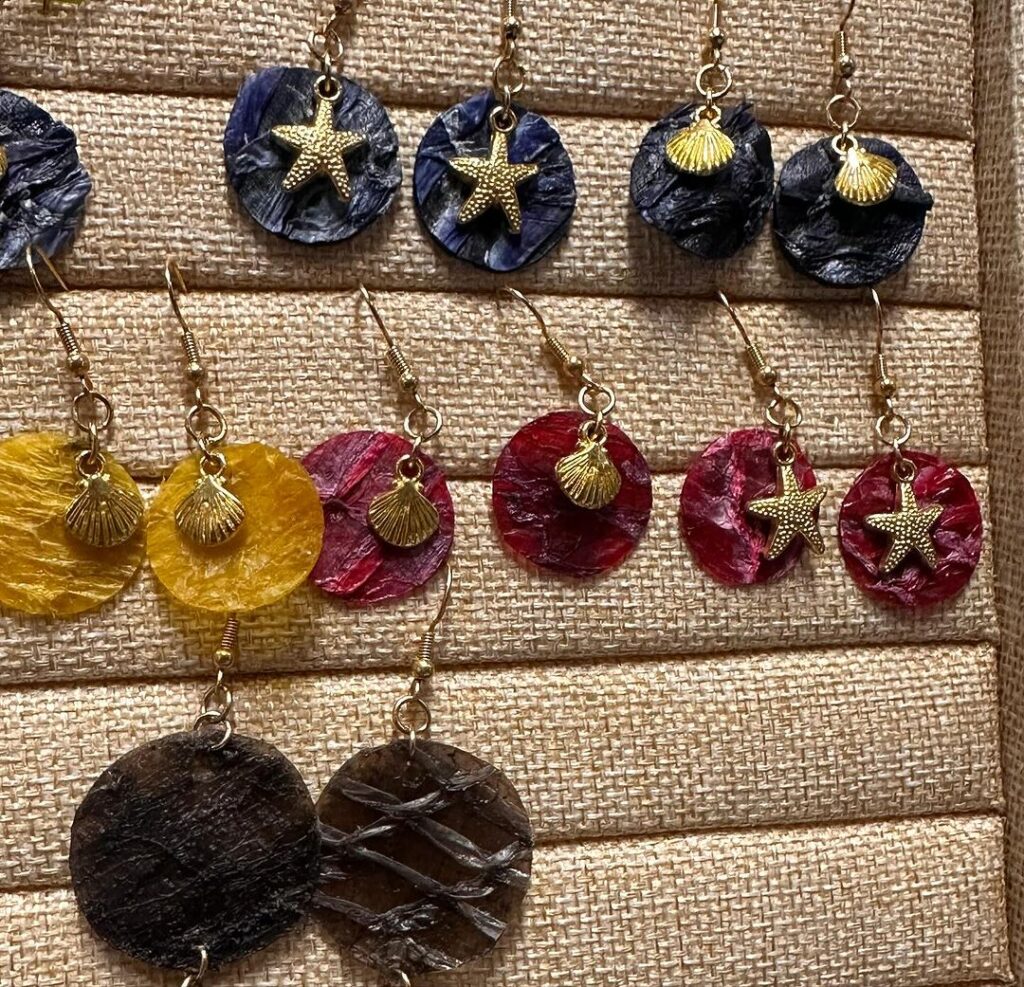On a serene beach in Costa Rica, where the ocean waves gently kiss the shore, a group of women is transforming something unexpected into beautiful, sustainable jewelry—fish skin. Led by Mauren Castro and Marta Sosa, these women are part of the Piel Marina cooperative, which specializes in turning discarded fish skins into fashionable accessories.
What began as an unlikely endeavor has evolved into a source of income, empowerment, and creativity, especially for the women of Costa de Pajaros, a small fishing village.
Mauren and Marta, once stay-at-home mothers dependent on their husbands’ fishing incomes, have discovered a new livelihood that not only uplifts them financially but also transforms waste into wearable art.
In partnership with the local NGO MarViva, they have mastered a unique process that turns slimy sea bass skins into luxurious leather—a craft passed down by Indigenous communities across the globe.
View this post on Instagram
For many Indian Americans, sustainable fashion and eco-conscious living have grown to be important values, making the story of Piel Marina particularly inspiring. The cooperative’s transformation of fish waste into jewelry reflects the core principles of sustainability, creativity, and self-reliance—values cherished by the Indian American diaspora as they balance traditional roots with modern living.
While fish skin may seem like an unusual choice for jewelry, the preparation process is surprisingly intricate and artistic. The women of Piel Marina begin by carefully working with sea bass skins, which would otherwise be discarded by the fishermen. These skins, slimy and fishy-smelling at first, are transformed into soft, beautiful leather over the course of several days.

The process starts with gently rubbing and scraping the skins to remove scales and any remaining flesh. “We take it and wash it with soap, just as if we were washing clothes,” explains 70-year-old Marta Sosa, her hands moving deftly through the leather-making steps. Once cleaned, the skins are dyed using a mix of glycerin, alcohol, and natural pigments, giving the leather vibrant colors while keeping the process eco-friendly.
The skins are then left to dry under the Costa Rican sun for about four days, transforming into a soft, pliable material that no longer smells like fish but retains a subtle texture. This natural fish leather is waterproof, durable, and versatile enough to be used in creating anything from earrings and necklaces to handbags.
The story of Piel Marina offers a glimpse into how sustainability can be beautifully merged with creativity. Like the age-old tradition of handloom weaving in India, this Costa Rican practice draws from local resources and transforms them into something exquisite.
Once the leather is ready, Mauren and Marta put on their designer hats. They craft delicate earrings, necklaces, and other accessories, adding personal touches to each item. Wearing their signature blue gloves and Piel Marina t-shirts, the women proudly showcase their work online through platforms like Instagram and Facebook. A pair of colorful butterfly-shaped earrings, made from dyed fish leather, costs around seven dollars and is a testament to their growing entrepreneurial spirit.
Selling these handcrafted items online has brought the women into the digital economy, allowing them to reach buyers not only in Costa Rica but also across the globe. They have even started collaborating with small-scale textile producers to sell fish leather for other products, expanding their impact.
View this post on Instagram
The Piel Marina women’s journey from homemakers to artisans is inspiring on multiple levels. Not only have they tapped into an innovative way to supplement their family’s income, but they’ve also embraced the challenge of turning waste into something valuable. As the cooperative grows, they dream of taking their fish leather creations to international platforms, with Mauren Castro’s eyes gleaming at the thought: “I would like it to be seen in Hollywood, in Canada or on the great catwalks in Paris!”
Just as Indian handcrafts like block printing, khadi, and jute products have found an international market, the women of Piel Marina hope to make their mark on the global fashion stage.

